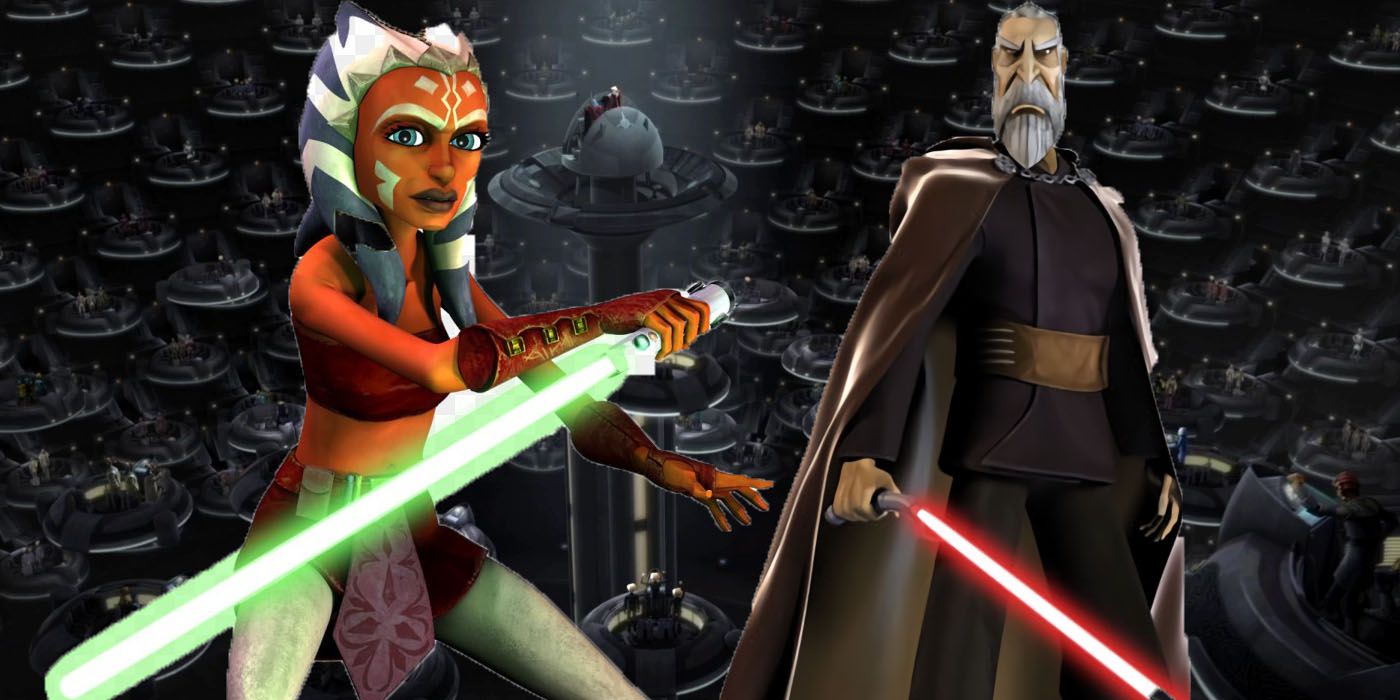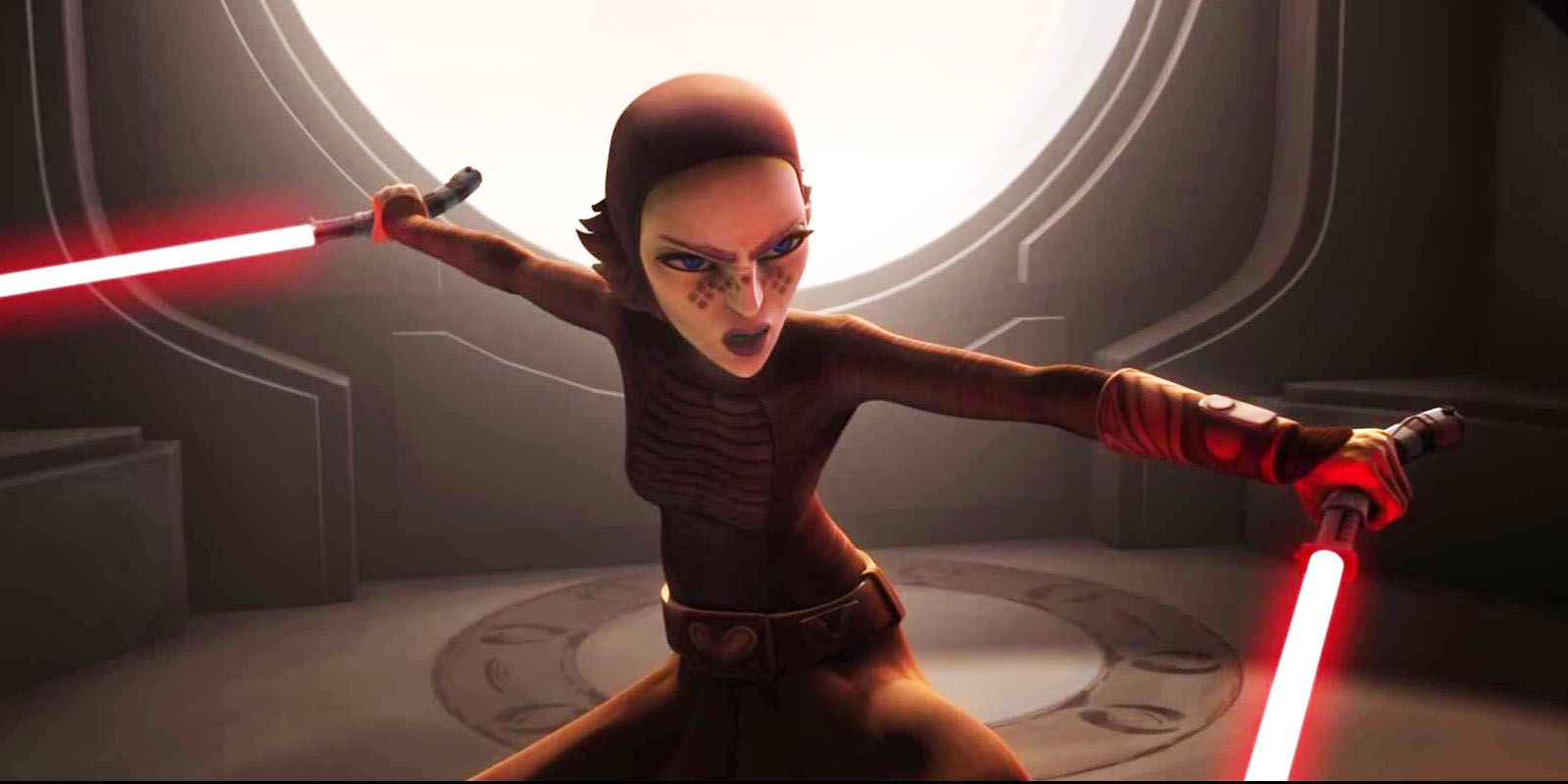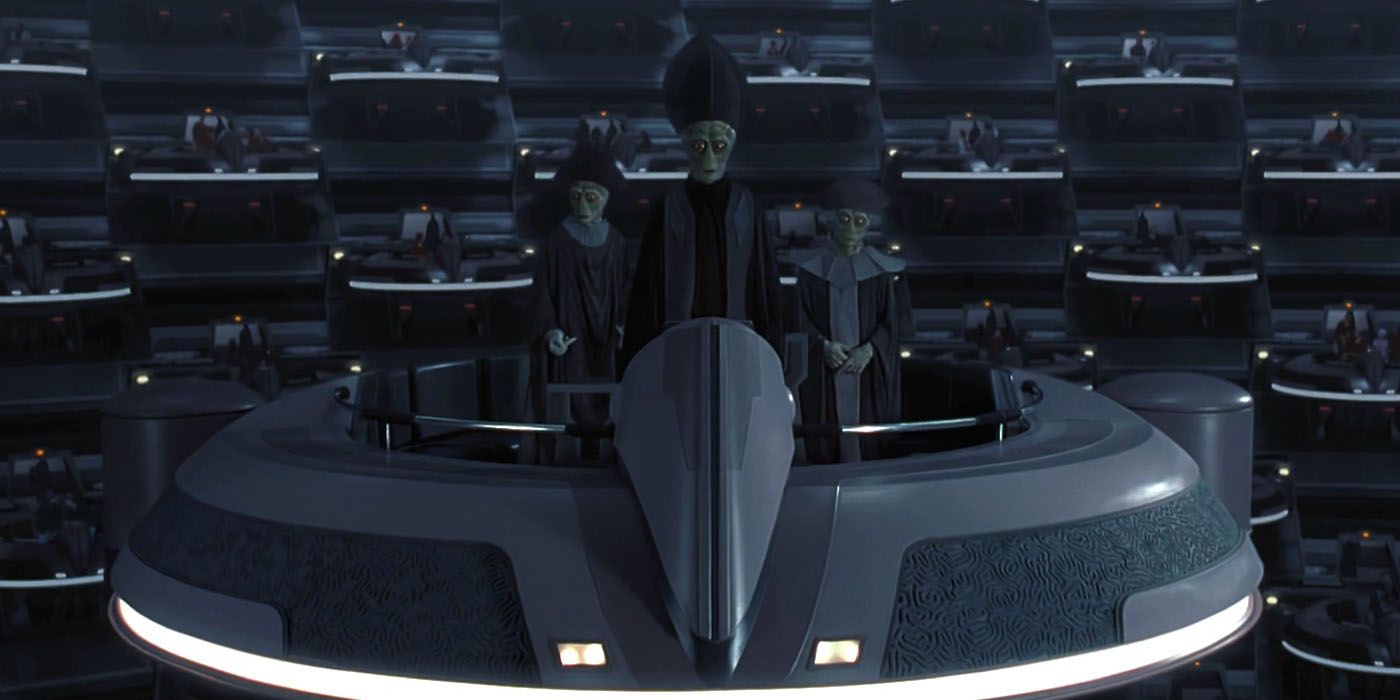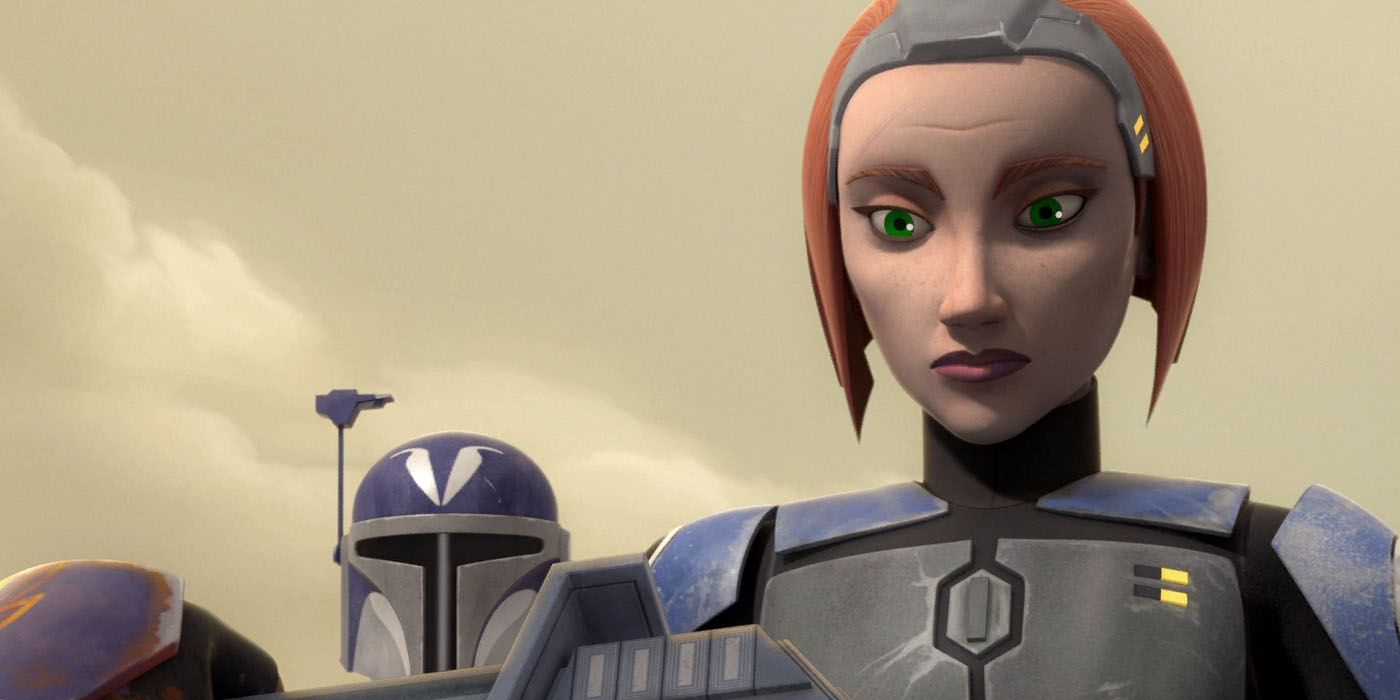One of the many ways Star Wars: The Clone Wars improved on the Star Wars prequels was by lending a greater level of clarity to the politics that drove critical events in that particular Star Wars trilogy. The prequels kicked off in 1999 with Star Wars: Episode I - The Phantom Menace and subsequently included Star Wars: Episode II - Attack of the Clones in 2002 and Star Wars: Episode III - Revenge of the Sith in 2005. Though financially successful, this trio of films was widely criticized for, among other factors, dedicating large amounts of screentime to tedious political discussions. Shortly after the prequels ended, The Clone Wars began airing on Cartoon Network in October 2008.
In the Star Wars universe, the Clone Wars is a three-year-long battle that raged between the Republic and its Jedi fighters and the Separatists, the latter side led by former Jedi Count Dooku. The Jedi, previously keepers of the peace, were now designated to lead an army of clone warriors against Separatist forces in battles that took place on numerous different planets. This prolonged war served as the bedrock for the 121 episodes of The Clone Wars, which dived into numerous previously under-developed corners of the Star Wars mythos, like the Dathomirian Nightsisters and even figures representing physical manifestations of the core tenants of the Force itself. This expansive narrative canvas was one of the most acclaimed parts of The Clone Wars, and it's that aspect of the show that allowed it to take a deeper dive into the in-universe politics that motivated the titular war in the first place.
While the motivations for the overarching antagonist, Palpatine, putting the Clone Wars into motion were always clear in the prequels, the politics that motivated the other denizens of this galaxy far, far away to engage in the Clone Wars remained a mystery until The Clone Wars animated series came around. Through this program, viewers got to understand the politics of the prequels in a manner heavier on depth and specifically rendered perspectives. Sometimes, The Clone Wars managed to accomplish this feat through something as simple as getting to the heart of what the war is even about.
The Clone Wars Explains What the War is Actually About
Since the very beginning of the Star Wars movies, the Clone Wars was an event to be referenced rather than something to be explored in-depth. Starting with Luke's inquiring Obi-Wan about the Clone Wars in Star Wars all the way to Yoda's final line in Attack of the Clones, this conflict was something talked about with immense gravity by Star Wars characters, but it wasn't an event explored heavily on-screen. The same can be said for the feelings and perspectives of individual characters who helped to lead to the Clone Wars transpiring, particularly in regards to how people perceive the Republic.
Specifically, there was a widespread perception that the Galactic Republic had become so corrupt that it was ignoring the very citizens that it was supposed to protect. Within the Galactic Senate, organizations like the Trade Federation and the selfish desires of individual senators were garnering greater precedence than individual planets. As the Senate became more and more enamored with its self-centered tendencies, Count Dooku and his Separatist movement sprung up as a form of potential salvation. Many systems, now coalesced into a new government called the Confederacy of Independent Systems, held onto hopes that Dooku and company could install a new form of government that would be conscious of their desires and needs. This growing threat of a Separatist movement usurping the Republic was the primary justification for the use of the secretly created Clone Army. This perspective of the Republic being disreputable was something only briefly glimpsed at in The Phantom Menace and Attack of the Clones but got widely explored through a myriad of characters through the run of The Clone Wars.
One of the most memorable examples of this was Barriss Offee, a Jedi apprentice to Luminara Unduli, who was eventually revealed to be responsible for the bombing of the Jedi temple. Her reasoning for this attack was that the Jedi have, much like the Republic Senate, become corrupt and, in the process, developed into more of a threat to the galaxy than Separatist forces. This notion that traditionally trustworthy institutions in the Galactic Republic had eroded into forces for apathy or even outright evil was echoed, albeit to less intense degrees, by other characters throughout the show's run.
Separatist Senator Mina Bonteri, for instance, is sympathetically shown to firmly believe that Dooku and the Separatist forces can help her and her people far more efficiently than the Republic. For her, turning against the Republic is simply a matter of making sure that the planet she loves is best taken care of. Meanwhile, an early episode in season one, "Bombad Jedi," sees Republic Senator Onaconda Farr defecting to the Separatists. The reasoning for this shift in allegiance is that the Separatists can bring essential supplies to Farr's planet, a task that the Republic has consistently failed to accomplish. That kind of dissatisfaction with the Republic's treatment of individual planets is a core reason for the widespread disillusionment with the Republic as a whole, and by extension, for the Clone Wars themselves.
The Influences of the Different Trades & Guilds
Throughout the prequels, audiences were exposed to wholly new aspects of the Star Wars universe, particularly in regards to the various unions and trade guilds that populated the Republic Senate. Such unions and trade guilds were, ideally, supposed to represent the interests and rights of large groups of everyday people. Many of them having either singularly loyalty or shared loyalty with the Separatists was supposed to be a signal that this group, unlike the Republic, considered the rights of the common man. However, despite having conceptually noble aims, these groups typically ended up having more corrupt means that would only benefit their wealthy leaders, like Techno Union ruler Wat Tambor.
Many of these entities came across as merely a blur in their fleeting appearances in the prequels, coming and going with very little explanation. Thus, such powerful organizations simply became more Star Wars mythos minutiae rather than entities viewers could get dramatically invested in. Just as they did with individual characters like Satine and people loyal to Dooku, The Clone Wars managed to improve on the politics of the prequels by dedicating several episodes to exploring these establishments and their motivations. Previously vaguely defined syndicates like the Trade Federation or the Techno Union had entire episodes dedicated to exploring their perspective on the titular war. The latter entity was especially spotlighted in a season one arc set on the planet Ryloth, which depicted Techno Union droid forces, under the orders of Wat Tambor, invading Ryloth and showing no regard for its vulnerable citizens. The Techno Union entered the Clone Wars under the guise of aiding everyday residents of the galaxy, yet its brutal actions during the Ryloth conflict demonstrated the self-centered hypocrisy driving the organization.
A similar sense of duplicity provided motivation for another critical guild, The Banking Clan. Previously only briefly highlighted in Attack of the Clones, The Clone Wars lent far more insight as to what made The Banking Clan tick. The season two episode "Senate Spy" allowed for viewers to understand the complicated place The Banking Clan, and its employees such as Rush Clovis, inhabited in the war. Such a precarious place involves the Separatist-controlled Banking Clan sporadically bankrolling Republic missions, giving them a place in the Clone Wars that is just as helpful to Padme as they are to Poggle the Lesser, the leader of a Confederacy-aligned planet. In the larger scheme of things, this organization's corruption is part of a long-term plan by Palpatine to ensure that he has an excuse to seize control of the banks. Once again, like with the Trade Union and even the Galactic Republic, we see an entity designed to aid people being used for far more self-serving ends.
Heroes on Both Sides
In the opening title crawl of Revenge of the Sith, there's a brief mention that, in the Clone Wars conflict, "there are heroes on both sides." It's an intriguing idea that never gets explored in any of the prequel movies; the antagonists on the opposing side of the conflict, like General Grevious, are drawn as such broad villains that one can never see them as heroes. Within The Clone Wars TV show, though, this idea of heroes in the Clone Wars not being limited to the Republic is frequently explored to fascinating effect. While the program isn't devoid of over-the-top antagonists, it also takes the time to paint moral shades of gray over many of the participants in this conflict.
This approach is especially apparent in a season three episode of The Clone Wars appropriately titled "Heroes on Both Sides." This episode sees Ahsoka Tano accompanying Padme Amidala on a trip to the Confederacy of Independent Systems to meet Separatist Senator and friend of Amidala, Mina Bonteri. Ahsoka, at the start of this episode, mirrors many viewers in having a very black-and-white perspective of the morality of those engaging in the Clone Wars. However, traveling Bonteri and her Separatist-controlled planet allows both Ahsoka and the audience to get a more nuanced view of this conflict. For the first time, both Ahsoka and viewers get to see the everyday lives of people who live under Separatist control. In the process, she sees discernable human beings, like Mina and her son Lux, on the opposing side of the Clone Wars who are doing their best to fight for a peaceful resolution to this conflict. Even Count Dooku, one of the show's recurring foes, is given some moral dimensionality in this episode as he's briefly depicted as a calm leader figure overseeing democratic processes in the Separatist Senate.
The sort of moral nuance that Revenge of the Sith hinted at but never explicitly explored is abundant in "Heroes on Both Sides" as well as numerous other episodes of The Clone Wars, including the ones that made up a season five arc detailing Darth Maul expanding his gangster empire. This plotline sees a hero emerge in one of Maul's most prominent soldiers, Mandalorian warrior Bo-Katan Kryze. Though she had previously helped Maul ascend to extreme power, she eventually betrays him and finds herself aiding Republic forces that she was previously hellbent on destroying. Much like fellow Mandalorian inhabitant Satine, Bo-Katan Kryze helps to provide a more morally complicated presence in the narrative of the Clone Wars. The Star Wars prequels had ended up having murky politics thanks to vaguely-defined characters. However, more specifically detailed characters of The Clone Wars lend credence to the idea that heroes truly can emerge from anywhere, including on both sides of an intergalactic battle.




